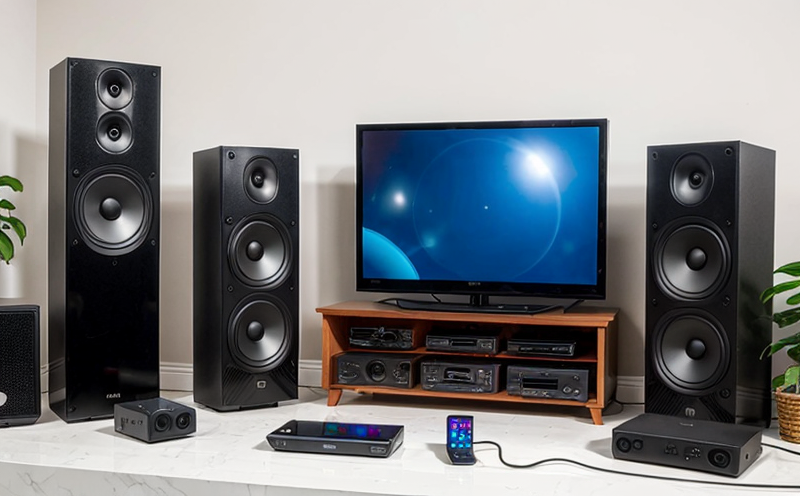CSA C22 2 Consumer Electronics Safety Compliance Testing
The CSA C22.2 standard is a pivotal framework in the realm of consumer electronics safety compliance testing. This Canadian national standard ensures that products comply with essential safety requirements, helping to protect consumers and prevent accidents or injuries. The standard covers various aspects such as electrical insulation, protective devices, and environmental stress conditions.
The CSA C22.2 series is particularly important for companies operating in the consumer electronics market who are aiming to meet regulatory standards not only in Canada but also across international borders. By adhering to this standard, manufacturers can ensure their products meet stringent safety requirements without compromising on quality or design flexibility.
Testing under CSA C22.2 involves several key procedures designed to assess the overall safety of consumer electronics devices. These include, but are not limited to, insulation resistance and strength testing, protective device testing (like fuses and circuit breakers), and more stringent tests for specific product types.
For R&D engineers working on new designs or modifications to existing products, understanding these requirements is crucial. They play a vital role in ensuring that prototypes are correctly prepared and tested according to the specified criteria outlined by CSA C22.2. This helps ensure early identification of potential issues before full-scale production begins.
Quality managers responsible for overseeing manufacturing processes also benefit significantly from familiarity with this standard. By integrating safety checks into their quality assurance protocols, they can maintain consistent product reliability and customer satisfaction levels. Additionally, compliance officers will find it essential to stay updated on any changes or updates made to the CSA C22.2 series as these could impact ongoing operations.
Compliance with CSA C22.2 is not just about meeting regulatory requirements; it’s an investment in brand reputation and consumer trust. Non-compliant products pose risks that can lead to legal action, reputational damage, and loss of market share. Therefore, conducting thorough safety assessments aligned with this standard ensures long-term success for businesses operating within the electronics sector.
Why It Matters
Consumer electronics form an integral part of modern life, and ensuring their safe use is paramount. CSA C22.2 plays a crucial role in safeguarding users from hazards associated with faulty or improperly designed products.
- Prevents Accidents: By testing for insulation resistance and strength, protective devices, and more stringent tests specific to certain product categories, CSA C22.2 helps identify potential risks early in the development process.
- Enhances Reputation: Compliance with industry standards like CSA C22.2 demonstrates a commitment to quality and safety, which is crucial for maintaining brand integrity and gaining consumer trust.
- Avoids Legal Issues: Non-compliance can lead to product recalls, fines, and lawsuits. Meeting the requirements outlined in this standard helps avoid such pitfalls.
In today’s competitive market environment, consumers increasingly prioritize safety when choosing electronic devices. Companies that adhere to standards like CSA C22.2 not only meet regulatory obligations but also differentiate themselves by providing safer products.
Scope and Methodology
The scope of CSA C22.2 encompasses a wide range of consumer electronics, including audio/video (A/V) devices such as televisions, speakers, and home theater systems. The standard aims to ensure these products are free from defects that could cause harm or injury.
Methodology involves multiple phases aimed at evaluating different aspects of the product’s safety:
- Inspection: Initial examination of the device for visible signs of potential hazards.
- Testing: Conducting various tests based on the specific requirements outlined in CSA C22.2, including electrical insulation resistance and strength testing, protective device testing (like fuses and circuit breakers).
- Evaluation: Assessing the results of each test to determine if the product meets all specified safety criteria.
This comprehensive approach ensures that every aspect of consumer electronics is thoroughly evaluated, ensuring they are safe for use by consumers.
Environmental and Sustainability Contributions
- Sustainable Design: By prioritizing safety during the design phase, manufacturers can minimize risks associated with unsafe products. This leads to more responsible manufacturing practices that contribute positively towards environmental sustainability.
- Eco-friendly Materials: Ensuring compliance helps in selecting safer materials for production, which can be recycled or disposed of responsibly later on.
- Reduction of Waste: With fewer recalls due to safety issues, there is less waste generated from faulty products making it easier to manage e-waste sustainably.





